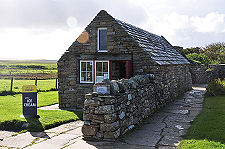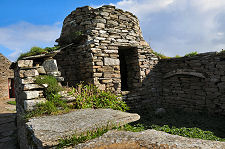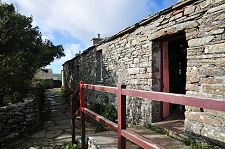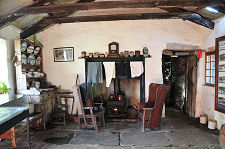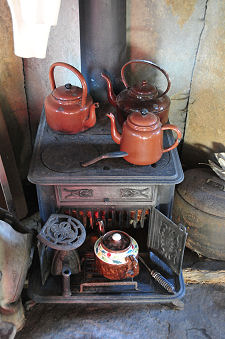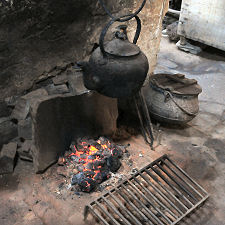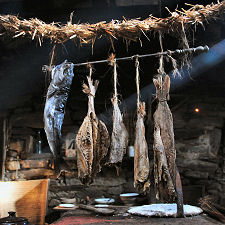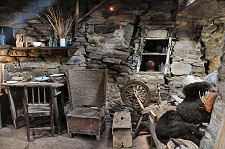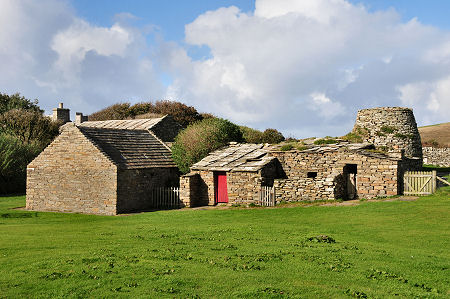 Kirbuster Museum |
Kirbuster Museum stands beside a minor road a mile north-east of Twatt, on Orkney's West Mainland. What you find is a fascinating and remarkable complex of buildings with a far greater depth of history than you might expect. A visit can very usefully be paired with one to Corrigall Farm Museum, about five miles to the south-east, also on West Mainland.
A sense of the history comes from the name. "Kirbuster" comes from the Old Norse "kirkju-bolstadr", which translates as "church farm settlement". There is a mound beside the nearby Kirbuster Burn which is believed to have been the site of the chapel from which the farm that later followed took its name. Though perhaps not much later. The first written records of a farm on this site date back as far as 1595. It seems likely that the farm was continuously inhabited from that date until 1963. The Hay family took up residence here in the farm in 1847. The last residents were two brothers and their widowed sister. The two brothers, Charlie and Willie Hay, died in 1961, and their sister Maggie went into residential care in 1963.
The land and farm were subsequently sold and the new owner, George Argo, took the decision to preserve the farmstead as it was, and to build a new farmhouse nearby. The property was donated by the Argo family to Orkney Islands Council in 1987. (Continues below images...)
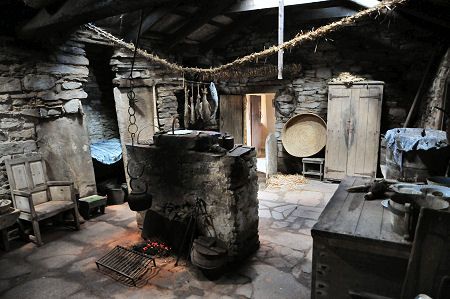 The Firehoose, Dating Back to 1595 |
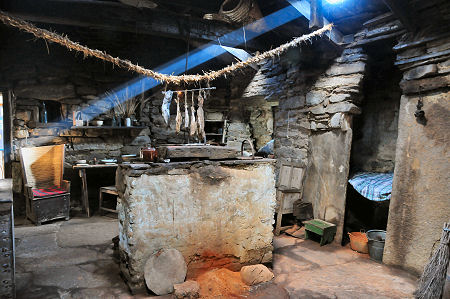 Another View of the Firehoose, with Sunlight and Smoke |
The farmstead at Kirbuster Museum comprises a number of separate buildings. They are all worthy of exploration and are described below. The most fascinating part of any visit, however, has to be the house, which is the third of three separate buildings that you encounter on walking along the length of the farmstead. The heart of the house is the room known as the "firehoose", which is believed to date back to 1595 or earlier. Standing in the centre of the "firehoose" is the fire.
This is set against a short length of low wall. There is no chimney. The smoke from the peat it burns simply rises into the roof space and out through a hole or "lum" left for the purpose. The lum is not directly above the fire, to prevent falling rain dampening it. Ventilation is assisted by a wooden funnel in the roof space. In terms of technological advances, this system seems to be one step forward from the system used in a traditional blackhouse, in which smoke from a peat fire burning in the centre of the floor finds its own way out through a turf roof. Having said that, it still ensures that the house and everything in it reeks of peat smoke after a fairly brief exposure. It's a smell that, once experienced, is never forgotten. Above the fire at Kirbuster are a row of hanging fish, being smoked. If it's a sunny day, the effect of light from the rooflights beaming through the smoke can be quite enchanting.
There are a number of other rooms in the house. The "annexe" at the near end is thought to be a later addition, while a bedroom and small dairy are attached to the rear of the firehouse. Beyond it is a later extension which provided two bedrooms with a parlour at the end of the building. This is shown as it would have been in the early 1900s, and was kept for best use only.
As already noted, there are a number of other buildings at Kirbuster Museum. The first you encounter houses the visitor reception and facilities. Next you come to a building dominated by the remains of a kiln used for drying grain. This is largely in ruins and would once have comprised a stable, a pig sty, a smithy and a barn.
Passing through the remains of a whalebone arch brings you to a stable that is in much better condition, while beyond the house and to its south is a large implement shed or byre. The farmstead is rounded off by gardens and a wooded area.
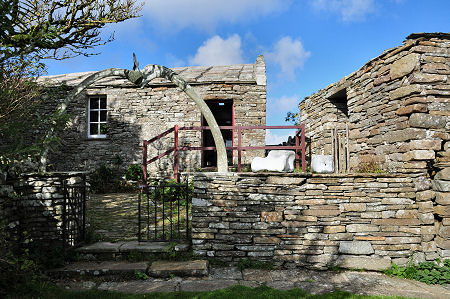 Another View of Kirbuster Museum |
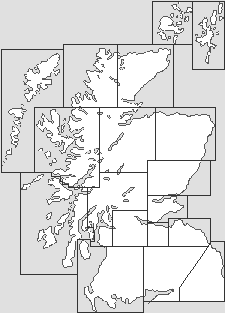
|
|
|
Visitor InformationView Location on Map3 Star Museum. Birsay, Orkney, KW17 2LR. Tel: 01856 771268. customerservice@orkney.gov.uk Kirbuster Museum Web Page Grid Ref: HY 283 254 What3Words Location: ///scooters.outs.pizzas |
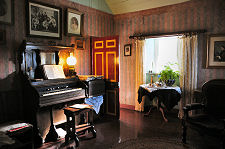 The Parlour |
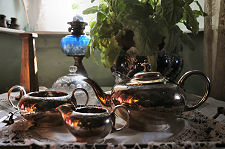 Tea Service |
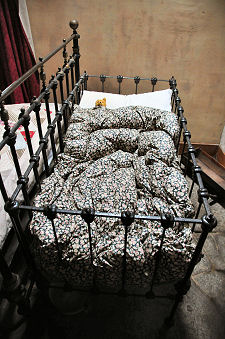 Child's Cot |
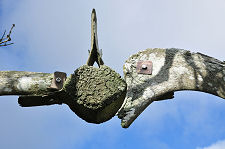 Whalebone Arch |
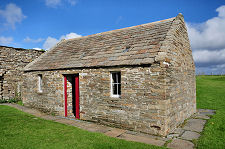 Stable |
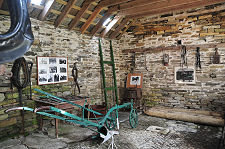 Inside the Stable |
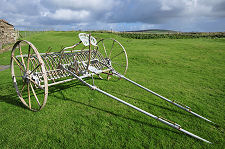 Farming Implement |
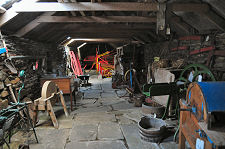 Implement Shed |
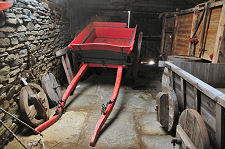 Cart |
